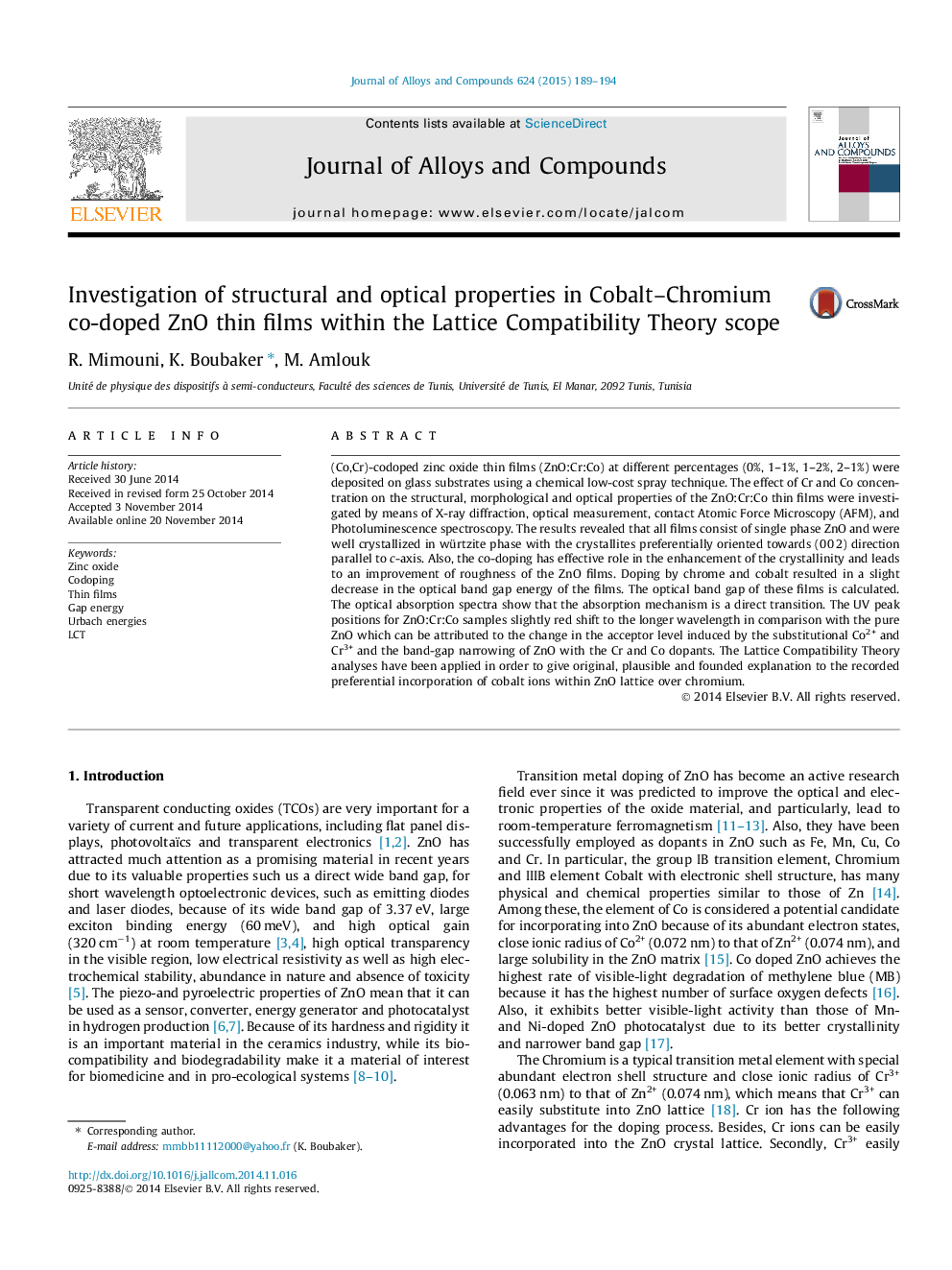| Article ID | Journal | Published Year | Pages | File Type |
|---|---|---|---|---|
| 1609808 | Journal of Alloys and Compounds | 2015 | 6 Pages |
•Co/Cr co-doped ZnO thin films were synthesized by a low-cost spray technique.•Optical and morphological properties of the Co/Cr co-doped ZnO system were described.•Lattice Compatibility Theory explains Co preferential incorporation in ZnO lattice.
(Co,Cr)-codoped zinc oxide thin films (ZnO:Cr:Co) at different percentages (0%, 1–1%, 1–2%, 2–1%) were deposited on glass substrates using a chemical low-cost spray technique. The effect of Cr and Co concentration on the structural, morphological and optical properties of the ZnO:Cr:Co thin films were investigated by means of X-ray diffraction, optical measurement, contact Atomic Force Microscopy (AFM), and Photoluminescence spectroscopy. The results revealed that all films consist of single phase ZnO and were well crystallized in würtzite phase with the crystallites preferentially oriented towards (0 0 2) direction parallel to c-axis. Also, the co-doping has effective role in the enhancement of the crystallinity and leads to an improvement of roughness of the ZnO films. Doping by chrome and cobalt resulted in a slight decrease in the optical band gap energy of the films. The optical band gap of these films is calculated. The optical absorption spectra show that the absorption mechanism is a direct transition. The UV peak positions for ZnO:Cr:Co samples slightly red shift to the longer wavelength in comparison with the pure ZnO which can be attributed to the change in the acceptor level induced by the substitutional Co2+ and Cr3+ and the band-gap narrowing of ZnO with the Cr and Co dopants. The Lattice Compatibility Theory analyses have been applied in order to give original, plausible and founded explanation to the recorded preferential incorporation of cobalt ions within ZnO lattice over chromium.
Graphical abstractFigure optionsDownload full-size imageDownload as PowerPoint slide
